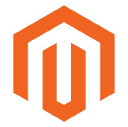My Path To Reduce My Ecological Footprint Led Me To Start A $204K/Year Eco-Friendly Fashion Company
Hello! Who are you and what business did you start?
Hey everyone, my name is Adrienne, and I’m the founder and current CEO of Faerie’s Dance, Inc. We’re a sustainable fashion company that focuses on ethically produced, eco-friendly clothing, lingerie, jewelry, and accessories.
Our customers include people who are concerned about the environment and human rights as well as those who have skin allergies to synthetic fabrics or chemical finishing agents.
When I started, I honestly didn’t know how many people had allergies and sensitivities to everyday clothing; now they’re our most loyal customers!
While we started primarily as a clothing company, our signature products today are our massive line of organic cotton bras, many of which cannot be purchased anywhere else in the USA other than our shop.
Roughly 50% of our current sales come just from bras. Roughly 70% of sales are from the combined Lingerie (bras, panties, sleepwear) and Socks categories.
The business currently supports me and my husband with...

Download the report and join our email newsletter packed with business ideas and money-making opportunities, backed by real-life case studies.

Download the report and join our email newsletter packed with business ideas and money-making opportunities, backed by real-life case studies.

Download the report and join our email newsletter packed with business ideas and money-making opportunities, backed by real-life case studies.

Download the report and join our email newsletter packed with business ideas and money-making opportunities, backed by real-life case studies.

Download the report and join our email newsletter packed with business ideas and money-making opportunities, backed by real-life case studies.

Download the report and join our email newsletter packed with business ideas and money-making opportunities, backed by real-life case studies.

Download the report and join our email newsletter packed with business ideas and money-making opportunities, backed by real-life case studies.

Download the report and join our email newsletter packed with business ideas and money-making opportunities, backed by real-life case studies.

















